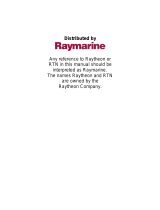
Magellan GPS 315/GPS 320 1
Introduction
Congratulations on your purchase of the Magellan GPS 315/GPS 320
receiver. Since introducing the world’s first commercial, hand-held GPS
receiver in 1989, Magellan has led the way with innovative GPS
products to meet a wide range of positioning and navigation needs.
The receiver is designed to get you out into the “Great Outdoors”
rather than spending hours reading the user’s manual. In order to get
you outdoors quickly, the manual is designed with key sequences rather
than wordy sentences.
Before you begin, make sure that your package includes the items listed
on the box. If any of these items are missing, please contact your local
Magellan dealer or distributor.
Conventions Used in this Manual
The manual is divided into chapters: Introduction, Getting Started, Basic
Operation, Reference, Customizing, Troubleshooting and Glossary. There
are also subchapters that describe NMEA, Datums and Accessories.
It is very important that you read through the Getting Started chapter
first as it prepares your receiver for use and provides basic instruction.
The Basic Operation chapter describes the features found in your
receiver including step-by-step instructions on their use.
The Reference section contains information to help you navigate using
waypoints, routes and auxiliary functions. Following is the Customizing
chapter, that allows you to establish options you want set in the receiver.
The Troubleshooting chapter gives you a problem and answer series to
guide you. The final chapter, Glossary, defines terms that may be
unfamiliar to you.
The manual is to be used with either the GPS 315 or the GPS 320.
These differ in that the GPS 315 has a database of worldwide cities
consisting of major, large and medium cities. The GPS 320 has a
database of worldwide cities as well as lighthouses, fixed navaids, buoys,
large and medium cities for three different regions of the world (North/
Central/South America, Europe/Africa and Australia/Asia).





















